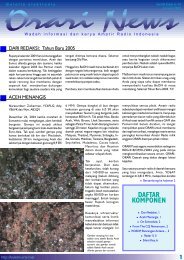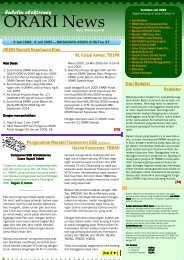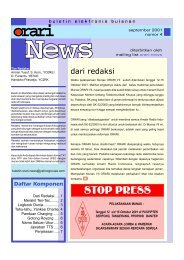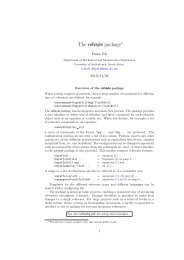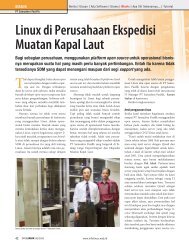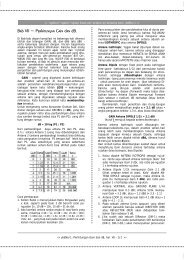Create successful ePaper yourself
Turn your PDF publications into a flip-book with our unique Google optimized e-Paper software.
Figure 41. Usual circuit supporting VHF parasitic oscillation in<br />
HF r-f amplifiers.<br />
There are several straightforward ways to suppress VHF parasitic<br />
oscillation. In general, it will probably be more easily suppressed<br />
if the general layout and by-passing methods indicated earlier are<br />
followed.<br />
It turns out that the frequency usually met in a VHF parasitic<br />
oscillation is well above the self-neutralizing frequency of the tube<br />
(see Section 5). However, if the self-neutralizing frequency of the<br />
tube can be increased and the frequency of the parasitic lowered,<br />
complete suppression of the parasitic may result, or its suppression<br />
by resistor-coil parasitic suppressors may be made easier.<br />
It is also possible to predict fairly closely with a grid dip wavemeter<br />
the parasitic frequency to be expected in a given equipment.<br />
The circuit should be complete and with no voltages on the tube.<br />
Couple the meter to the anode or screen lead and determine the<br />
resonant frequency. The following two methods of eliminating the<br />
VHF parasitic oscillation have been used successfully:<br />
(a) By placing a small coil and resistor combination in the<br />
anode lead between the anode of the tube and the tank<br />
circuit (see Figure 42). The resistor-coil combination is<br />
usually made up of a non-inductive resistor of about 25 to<br />
100 ohms, shunted by three or four turns approximately<br />
one-half inch in diameter and frequently wound right around<br />
the resistor. In some cases it may be necessary to use such<br />
a suppressor in both the anode and grid leads. The resistorcoil<br />
combination operates on the principle that the resistor<br />
71




